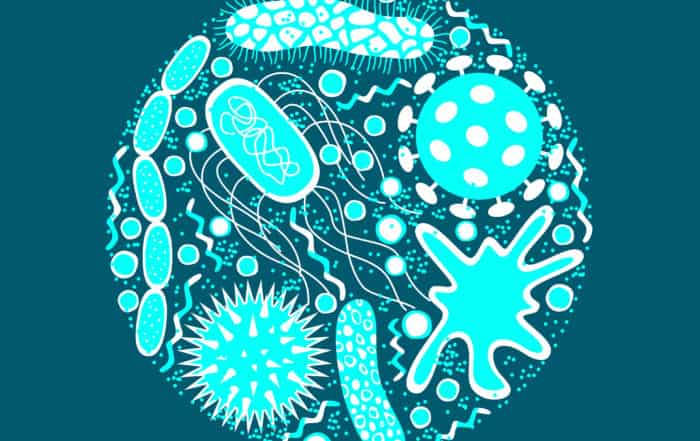The information below is from the 2019 ARI webinar, PANS/PANDAS – Research Updates
In rare cases, some children may experience the sudden onset of Obsessive-Compulsive Disorder or eating disorders. This pediatric acute-onset neuropsychiatric syndrome is commonly called PANS. PANDAS is a subtype of PANS with a specific known cause, exposure to a strep infection. While PANS/PANDAS occurs mostly in children who do not also have Autism Spectrum Disorder, in rare cases, a child may have both conditions. Recognizing and diagnosing PANS/PANDAS in a child with ASD can be especially challenging because many of the symptoms overlap.
Signs and Symptoms of PANS/PANDAS
Between 1 and 3% of youths have OCD. Among children with OCD, up to 5% may meet the criteria for PANS/PANDAS. While as many as 17% of children with autism also have OCD, it is very rare that their OCD is linked to PANDAS. Even so, the situation can arise. When it does, it can be difficult to separate the symptoms of autism from signs of PANS/PANDAs since many of the symptoms and comorbidities overlap.
While PANS is a group of symptoms without an undetermined cause, PANDAS does have a clear trigger. In most cases, the onset of PANDAS is triggered by exposure to Group A Streptococci, commonly known as strep throat or a strep infection. Other microbes, including Lyme and Mycoplasma, may also be related to PANDAS. When a child with genetic susceptibility (2-5% of the population) is exposed to these microbes, it causes a misdirected immune response, which leads to brain inflammation. This can manifest as PANDAS.

PANS/PANDAS is marked by the abrupt onset of OCD or Anorexia. With the concurrent onset of at least two of seven signs:
- Anxiety
- Behavioral developmental regression
- Emotional liability or depression
- Irritability aggression or severally oppositional behavior
- Deterioration in school performance
- Sensory or motor abnormalities
- Somatic signs/symptoms, especially insomnia and urinary symptoms
PANDAS is essentially a form of autoimmune encephalitis, a complex set of brain disorders, characterized by autoimmune induced neuroinflammation. It is diagnosed only when symptoms are not better explained by other neurologic or medical disorders such as Sydenham’s chorea or Tourette Syndrome.
Who gets PANS/PANDAS?
By definition, PANS/PANDAS affects children. While it may be diagnosed in children between the ages of 3 and 12, the average age of onset is between 7 and 8 years old. It is most common in children between Kindergarten and second grade.
PANS/PANDAS seems to affect all socio-demographic groups equally. However, researchers have noticed increased rates of these conditions in families with a history of acute rheumatic fever or OCD. For a more in-depth look into the history and impacts of PANDAS, view the webinars Research Updates – PANS/PANDAS by Dr. Susan Swedo, who led the NIMH team that was first to identify this new subtype of pediatric OCD and and our latest webinar Systemic Inflammatory & Autoimmune Diseases—PANS by Jennifer Frankovich, MD, MS.
Dr. Swedo describes comorbidities as a rule, rather than the exception, in children with PANDAS. Common Comorbidities include:
- Sleep disorders (80%)
- Behavioral regression (98%)
- Inability to concentrate (90%)
- Handwriting deterioration (90%)
- Urinary frequency, urgency, enuresis (90%)
Only about 10% have hallucinations, and about 20% have eating disorders. More common comorbidities include short-term memory loss, hyperactivity, aggressiveness, learning difficulties, and sensory hypersensitivity.
How PANS/PANDAS is diagnosed
Diagnosis of PANS/PANDAS is based on the consensus statement from the PANS Consensus Conference, published in the Journal of Child and Adolescent Psychopharmacology in 2015. PANS/PANDAS requires a differential diagnosis, meaning that the symptoms cannot be better caused by another known medical or neurological disorder. Other diagnoses might include:
- Lupus
- Steroid responsive encephalitis
- Multiple sclerosis
- Guillain Barre syndrome
- A different form of Autoimmune encephalitis
- Other disorders
Before diagnosing PANDAS, a physician may order laboratory testing, EEG and MRI scans, or a sleep study. They will likely take a comprehensive family history (paying special attention to genetic factors and exposure to strep), perform a physical examination, and look for involuntary movements and dilation of the pupils. If the onset is recent, the clinician may also take a throat culture to identify the presence of a strep infection. Remember that PANDAS can only be diagnosed if the symptoms cannot be explained by another disorder. Clinicians should seek to rule out other illnesses first.
How is it treated
Clinicians generally take a three-prong approach to treating PANDAS.
1. Treating and preventing infections: If the child has a bacterial infection, treating this infection can reduce symptoms and improve outcomes, especially during the first weeks or months of illness. In this case, a physician may prescribe 3 to 4 weeks of narrow-spectrum antibiotics.
2. Addressing immune system dysfunction: Immunomodulatory therapies to address immune system dysfunction may include NSAID’s Oral or IV steroids, intravenous immunoglobulin (IVIG), therapeutic plasmapheresis, and others indicated by severity. These are only useful in conjunction with infection treatment and psychiatric and behavioral interventions.
If a child has OCD but does not have PANS/PANDAS, there is no reason to pursue a long-term immune treatment. In a study by Nicolson et al, JAACAP 2000, children with OCD but without PANS/PANDAS saw no significant improvement from therapeutic plasma exchange. These therapies are expensive and intensive. Other studies have shown similar results.
3. Applying Behavioral and Psychiatric Interventions: Behavioral and psychiatric Interventions may include SSRI’s Anxiolytics, Soporifics, other typical psychiatric medications, and cognitive behavior therapy. When choosing a therapist, Dr. Swedo suggests looking for an expert in OCD treatment:
“If I had my choice between a therapist who had a lot of experience treating children or one who had a lot of experience treating OCD in adults, I would actually go for the treatment of OCD in adults because treatment of OCD in children is identical to that has been found to be effective for adult patients with obsessive-compulsive disorder,” she said.
Supportive therapy can help parents understand the course of illness and treatment. Getting parents into CBT even before the child is ready can be very helpful.
Treatments should be administered by a licensed and qualified healthcare provider. If you suspect your child may have PANS or PANDAS, consult your primary care physician.
In very rare cases, a child with autism may also qualify for a diagnosis of PANS/PANDAS. For a deeper look at the latest PANS/PANDAS research, view the webinar presented by Susan Swedo, M.D. and our latest webinar Systemic Inflammatory & Autoimmune Diseases—PANS by Jennifer Frankovich, MD, MS.
For more information, visit the PANDAS Physicians Network.
ARI thanks Sue Swedo, MD, for her contributions to this article.
Blood-brain barrier dysfunction in Pediatric Acute Neuropsychiatric Syndrome (PANS) and Regulation
Free webinar at 1 p.m. Eastern time (US), Wednesday, May 29, 2024 Tune in to learn research updates on blood-brain barrier dysfunction in Pediatric Acute Neuropsychiatric Syndrome (PANS) and
Could treating moms’ periodontal disease lower odds of autism?
Mothers who receive periodontal treatment during pregnancy may reduce the odds of their children developing autism spectrum disorders (ASD), according to a new study. Carl Bose and colleagues collected data on 306
Co-Occurring Conditions and Autism
Research suggests that individuals with autism experience some conditions―including underlying medical issues, neurodevelopmental differences, and mental health issues―more frequently than the general population. Learning about these potential medical needs can help you
Researchers find clues to inconsistent microbiome findings in ASD, see longitudinal effects
A new study suggests that changes occurring over time in the behavior of individuals with autism spectrum disorders (ASD) may be related to their gut microbiomes. In addition, it offers insights
Alzheimer’s drug appears to benefit adult men with fragile X
A drug intended to help people with Alzheimer’s disease may also be beneficial for individuals with fragile X syndrome, according to a new study. Fragile X syndrome is the most common known
The Role of Neurotransmitters in GI Disorders Related to Autism
Kara Gross Margolis, MD, explores recent studies surrounding the role of serotonin and the more extensive gut microbiome in gastrointestinal (GI) and inflammatory conditions related to autism. She presents case studies highlighting







